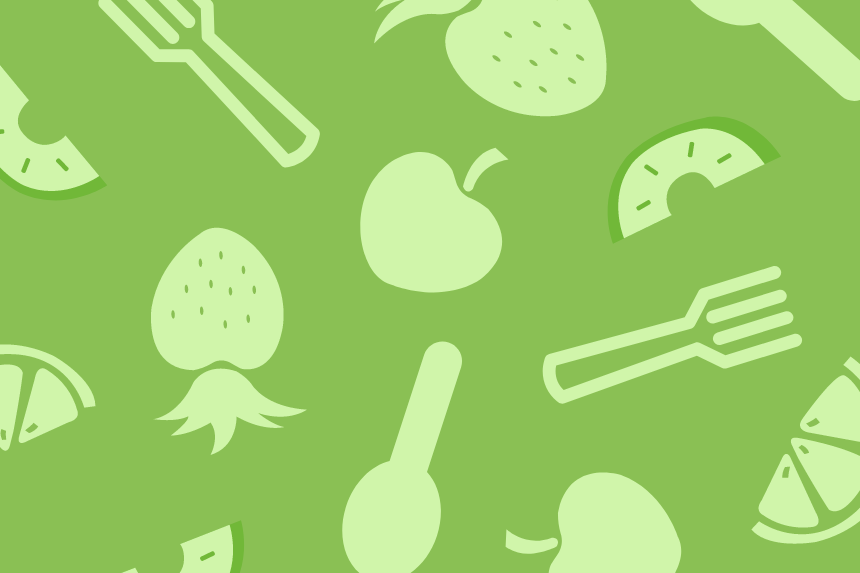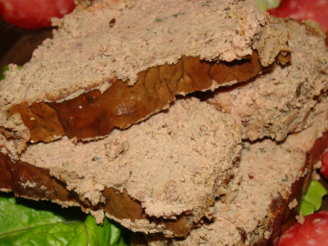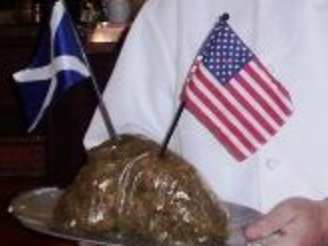Haggis

- Ready In:
- 4hrs
- Ingredients:
- 22
- Yields:
-
3 pounds
- Serves:
- 8
ingredients
- 3 -4 ounces liver (or other organ meat)
- 6 ounces scrapple
- 4 ounces spicy sausage
- 4 ounces ground veal or 4 ounces ground lamb
- 4 ounces ground fowl (such as Cornish hen, pheasant, duck, or goose. Turkey may be used, but does not have as strong a fla)
- 8 ounces kidney beans, cooked and mashed (Can substitute refried beans)
- 1 1⁄2 cups beef broth
- 2 teaspoons Kitchen Bouquet (or any other browning or seasoning sauce)
- 1 1⁄2 teaspoons Pickapeppa Sauce (or other peppery spicy thick sauce)
- 2 medium onions, peeled and finely chopped
- 8 -10 ounces old-fashioned oatmeal (** DO NOT USE instant or 1-minute oatmeal)
- 6 ounces suet (shredded or ground, divided into 4- and 2-oz batches, I recommend freezing the suet in small chunks,)
- salt or salt substitute
- 1 tablespoon garlic powder
- 1 1⁄2 teaspoons seasoned pepper
- 1⁄2 teaspoon nutmeg, grated
- 1⁄4 teaspoon cayenne pepper (or more, to taste)
- 2 teaspoons sage
- 1⁄2 teaspoon red pepper flakes (or more, to taste)
- Tabasco sauce
- peppery dry spices
- 96 inches pork sausage casings, thoroughly cleaned (if you can't get sausage casing, don't worry, keep going)
directions
- In a medium saucepan, add Kitchen Bouquet and Pickapeppa to the beef broth.
- Boil the liver (or other organ meat) in this mixture for five minutes.
- Drain and put aside to cool.
- Cut the scrapple (chilled) into thick slabs.
- Boil scrapple in broth for two minutes.
- Drain and put aside.
- Do not discard the remaining broth mixture.
- Toast (broil) the oatmeal in the oven until it all begins to turn a pale brown.
- Grind the liver or organ meat (I recommend using the same method as for the suet, above).
- Mix all the ingredients (except the 2-oz batch of suet) with the seasonings and spices.
- Using your hands, mix thoroughly.
- The objective is to produce a mixture that is thoroughly moist but not wet.
- If your mixture is just a little too dry, add just enough of the remaining broth until a thoroughly moist consistency is achieved.
- If your mixture is very dry (especially if you used lean meats and lots of oats), add some of the remaining ground suet in addition to some broth until a thoroughly moist consistency is achieved.
- Cut the sausage casing into 12-inch strips.
- Stuff the haggis mixture into each strip of sausage casing.
- It is CRITICAL that you leave 2 1/2 to 3 inches at both ends unfilled.
- This is absolutely necessary to allow the oats room to swell during the cooking process.
- Leave the ends of the casings open- do not tie or otherwise close them.
- Place the haggises in a steamer and cover and steam them for three hours.
- If you do not have sausage casings, thoroughly and heavily grease the top pan of your steamer (preferably with shortening).
- Place the haggis mixture in the pan, but make sure you leave ample space for swelling during cooking.
- I suggest only filling the pan about 2/3 full.
- If your steamer does not have a vented lid, cover the pan with greaseproof paper and a cloth.
- Steam the mixture for three hours.
- Repeat the cooking process with any remaining mixture.
- In Scotland, the traditional way to serve haggis is piping hot (on warm plates) with mashed potatoes and mashed yellow turnips-"tatties and neeps", as they are called in Scotland- and to give the meal a truly Scottish flavour, I recommend serving a glass of single malt whiskey along with it.
- The cooked haggis may be refrigerated or frozen.
- I like to slice cold haggis and heat it through in a DRY frying pan until golden brown on both sides.
- I serve fried haggis with poached eggs for breakfast, and also with chips (chips= French fries) for lunch.
Questions & Replies
Got a question?
Share it with the community!
Reviews
-
Sir, like the other two commentors, I would hasten to remind you that traditional Scottish, Irish, or English cooking normally did not involve any kind of red peppers or tabasco sause under a regular basis. Especialy not Hagis- to use such a thing and say its an immitation to not only the Scots but also to any true hearted Ren Faire Guild Member, I happen to be both. Try something like a Lintel Stew, it'll be much closer to real period food.
-
This has WAY too many ingredients for a real haggis, especially all the spicy pepper stuff and so many herbs, and where on earth did you get the idea that any kind of poultry would ever make it into a Haggis? Haggis is made with some black pepper, with mutton/lamb and some herbs, but not that many, and certainly not with any kinds of pepper/chili sauces . And none of the ingredients are not safe for human consumption. It is amazing what Americans make up about cultures they don't have a clue about. It's like the idiots who came over and refused to buy lambswool sweaters because they might catch foot and mouth.
RECIPE SUBMITTED BY
Millereg
Christmas Island
Gavin "Miller" Duncan passed away November 12, 2004 in Laurel, MD from complications of a "broken" heart. The outpouring of support from the Recipezaar community while his health was declining was a huge comfort to him and even "perked him up" a bit in his final month. Miller was a huge asset to Recipezaar, not only due to his incredible collection of recipes, but his participation in the forums. Miller was known for his wonderful low-sodium recipes, his warmth, and last, but not least, his wicked, dry sense of humor.
Liza at Recipezaar
*********************************************************
No, the picture to the left is not me. It is, in fact, a picture of famous TV Chef Jamie Oliver (a/k/a Thpit Boy)’s grandfather, the late Sir Topaz McWhacker. Note the strong family resemblance, most noticeable in the nose, eyebrows, and general lack of cleanliness Legend has it that Topaz taught Thpit everything that he knows about whacking and about only washing and combing his hair twice a year.
.
Instead of the trivia that many Recipezaar members have displayed on their “About Me” pages, I thought it might be a tad more helpful if I were to provide some beneficial information that you can put to good practical use either in your own kitchen or when you are watching the antics of some celebrated TV chefs. So, for your enlightenment.....
.
.
Chairman Kaga:
When he says “Ion Shff”, he really means “Iron Chef” or, perhaps, “I need a Kleenex”
.
Chef Paula Deen:
When she says “awl”, she really means “oil”.
When she says “y’all”, she really means “everyone except m’all”.
When she says “bring the water to a bawl”, I have no clue what she means - I thought you could only make a baby “bawl”.
And, boys and girls, you can easily Deenize the sentences that you use in your very own kitchen, such as “All y’all can bawl your corn in olive awl or wrap it in aluminum fawl”.
.
Emeril Lagasse:
When he says “confectionery sugar’, he really means “confectioners’ sugar”.
When he says “pappa-reeka”, he really means “paprika”.
When he says “inside of”, he really means “in”.
When he says “a little”, he really means “a lot”. Have you ever tried to count the number of times he says “a little” during any given show? Don’t – it will drive you nuts.
When he says “cardamin”, he really means “cardamom”.
When he says “my water don’t come seasoned”, what he really means is “I need a new joke writer”.
When he says “that www dot food thing”, he really means “I flunked Computerese 101”.
.
Iron Chef Morimoto:
When he says “Foo Netwu”, he really means “Food Network”.
.
Dessert Dude Jacques Torres:
When he says “I going”, he really means “I am going”. (The verb “to be” has apparently been deleted from the French language.)
.
Spit Boy Jamie Oliver:
When he says “whack it in the oven”, he really means “I am into hot, kinky stuff”.
When he says “Bob’s yer uncle”, what he really means is “you’d better ask your aunt how well she REALLY knew that mailman named Robert”.
When he says “rocket”, he really means “an older weapon being used in Iraq”.
When he says “Fewd Netwuk”, he really means “Food Network”.
.
Numerous chefs:
When they say “codfish” and “tunafish”, what they really mean is “cod” and “tuna”, respectively. Please note that they use these terms so that you don’t go out and buy “codanimal” or “tunavegetable” by mistake. Having said that, I have no clue as to why they don’t refer to “troutfish”, “salmonfish”, “red snapperfish”, etc., etc.
.
Giggly-Wiggly Rachael Ray:
When she says “EVOO”, she really means “don’t use BOCO (boring old corn oil)”.
When she says “a little lettuce action going on”, she really means “with only 8 minutes left in the game, cabbages are still in the lead, but lettuces are making a strong comeback”.
.
Two Fat Ladies:
When they say “I gwing”, they really mean “I am going” or “Sorry, but we have been watching too many episodes of Jacques Torres’ show”.
.
Please note that the above is not all-inclusive. If there are other celebrity chef words or phrases that have you stumped, please post an "ISO" message in the discussion forums and I will find the translation for you.


